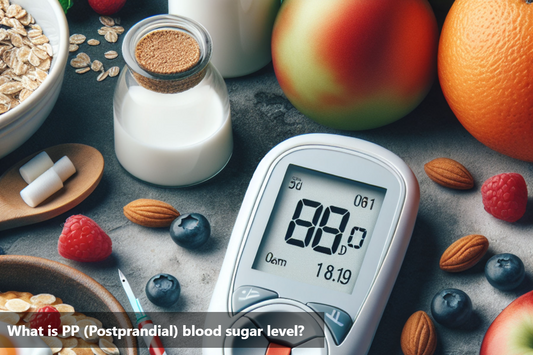Sliding scale insulin is a method commonly used in diabetes management to regulate blood sugar levels effectively. This approach involves adjusting insulin dosage based on the individual's current blood sugar readings. Unlike fixed insulin doses, sliding scale insulin provides flexibility to tailor the treatment to the patient's specific needs.
One key aspect of sliding scale insulin is its ability to adapt dosages according to the patient's blood glucose levels at different times of the day. This personalized approach helps in preventing fluctuations in blood sugar levels and maintaining overall control.
In summary, sliding scale insulin plays a vital role in diabetes management by offering personalized dosing strategies to help individuals maintain optimal blood sugar control. Its flexibility and adaptability make it a valuable tool in the overall treatment plan for diabetic patients.
How Does Sliding Scale Insulin Work?
Sliding scale insulin is a regimen used to manage blood sugar levels in people with diabetes, particularly in hospital settings or during periods of acute illness. Here's how it works:
Customized Dosing: Sliding scale insulin involves adjusting insulin doses based on the current blood sugar level of the individual. The dose "slides" up or down depending on the blood glucose reading at that moment.
Predefined Scale: Healthcare providers establish a predefined scale that determines the amount of insulin to be administered based on the blood glucose level. Typically, the scale consists of different insulin doses corresponding to different ranges of blood sugar levels.
Regular Monitoring: Blood sugar levels are monitored regularly throughout the day, often before meals and at bedtime. Based on the readings, the appropriate insulin dose is administered according to the sliding scale protocol.
Flexibility: The sliding scale insulin regimen offers flexibility in insulin dosing, allowing adjustments based on individual insulin sensitivity, dietary intake, and activity level.
Supplemental Insulin: In addition to scheduled insulin doses, sliding scale insulin may include supplemental insulin doses to correct high blood sugar levels (hyperglycemia) as needed.
Temporary Solution: Sliding scale insulin is often used as a temporary solution during hospitalization or acute illness when the individual's insulin requirements may be variable and unpredictable.
Hospital Sliding Scale Insulin Protocol
Hospital sliding scale insulin protocols manage blood sugar levels in patients during their hospital stay. They involve:
Monitoring blood glucose regularly.
Administering insulin doses based on predefined scales.
Adjusting doses as needed.
Documenting insulin administrations and blood glucose levels.
Providing patient education on diabetes management.
These protocols are essential for short-term blood sugar control but are not substitutes for long-term diabetes management strategies.
Insulin Sliding Scale Chart: A Detailed Tool for Diabetes Management
In healthcare settings, an insulin sliding scale chart plays a crucial role in effectively managing blood sugar levels in patients with diabetes. This specialized tool serves as a detailed guideline that outlines the appropriate insulin dosages based on the patient's blood glucose readings, ensuring precise adjustments to insulin therapy.
The chart is meticulously designed to specify the insulin dose to be administered in response to the patient's blood glucose level falling within a particular range. By utilizing this dynamic approach, healthcare providers can tailor insulin dosages more accurately, striving to maintain optimal blood sugar levels throughout the patient's hospital stay.
Moreover, the insulin sliding scale chart is a versatile tool that offers flexibility in treatment by allowing for real-time adjustments based on the patient's changing glucose levels. This proactive method enables healthcare professionals to adapt the insulin dosage promptly, ensuring consistent monitoring and control of the patient's blood sugar levels.
Bottom Line
Sliding scale insulin is pivotal in managing blood sugar levels for diabetics, allowing personalized adjustments based on individual readings. By tailoring doses to specific levels, it efficiently regulates glucose, reducing hyperglycemia or hypoglycemia risks. Standardized protocols in hospitals ensure consistent insulin administration, enhancing patient safety and care during hospital stays. These protocols streamline diabetes management and improve health outcomes. Insulin sliding scale charts guide healthcare providers in dosing decisions, customizing treatment plans and monitoring patient responses. Overall, sliding scale insulin offers flexibility and individualized care, crucial for optimal blood sugar control and improved quality of life in diabetic patients.
This Blog post is an initiative by DiabeSmart, to provide accurate and Nutritionist / Doctor approved information related to Diabetes. DiabeSmart is India's first Food brand designed specifically for Diabetics, that has been clinically tested on Diabetics and Pre-Diabetics to deliver 55% - 70% lower Sugar spikes. DiabeSmart is part of Lo! Foods - India's leading brand for Everyday Functional Health foods.













